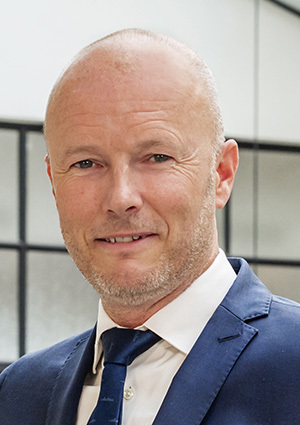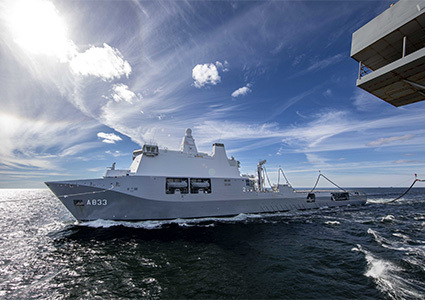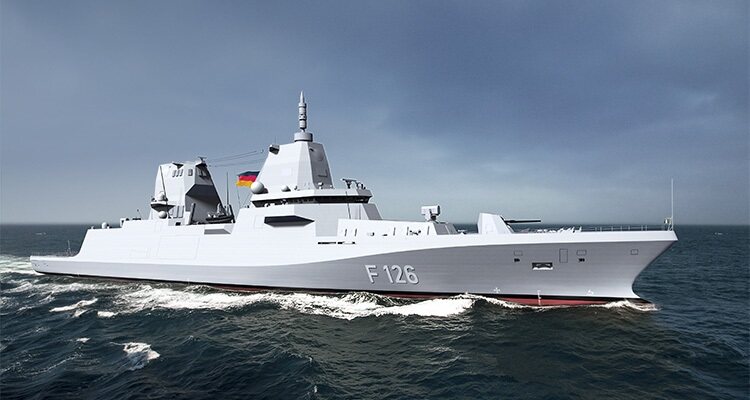Manufacturing Today dives into the pivotal role Damen Naval plays in securing global waters
Seventy percent of the earth’s surface consists of water. Our waterways help connect communities, open trading opportunities, and generate energy. To ensure global prosperity for the next generations and keep the earth habitable with an ever-increasing world population, it is essential that we use the water and the seabed as optimally and responsibly as possible – at least, that’s Damen Naval’s perspective, a business that provides maritime solutions to utilize and protect these resources.
Damen Naval is the dedicated naval shipbuilding division of the Damen Shipyards Group, which brings together the group’s naval activities, both in the Netherlands

and abroad. With roots stretching back almost 150 years, Damen Naval is a critical aspect of the Damen Group. “Having delivered more than 400 vessels to customers worldwide, we are a trusted partner in the international marketplace, known for our role as a full-service provider or integrator throughout the lifecycle of our products,” begins Richard Keulen, Director of Corporate Strategy and Innovation. “While taking pride in our heritage, we are looking towards the future,” he adds. Richard, along with his colleague, Frank Verhelst, Project Director F126 of Damen Naval, guides us through the intricacies of the business, as well as the recent success of its F126 project.
Initially, as a family-owned shipbuilder in the Netherlands, the Damen Shipyards Group focused on standardizing workboats, especially tugboats, to become a global market leader in this segment. “This was all introduced under Kommer Damen, having taken over the company in 1969. Gradually, the business developed a high quality of standardization and modularization, which can also be found in fast-supply vessels, coast guard and law enforcement vessels, under the name Stan Patrol. In these categories, we started to build on speculation and stock, which was possible because of this highly standardized and modularized engineering method, based on building and outfitting with a range of selectable standard subsystems, auxiliary systems, and propulsion sets. It enables shorter lead times, with options for new customers to select final and specific outfitting variants,” Richard explains.
Furthermore, the Dutch Ministry of Defence and the Royal Netherlands Navy have been launching nine generations of Damen Naval ships. As a modern navy within NATO and the EU, the Royal Netherlands Navy continuously challenges Damen Naval to further improve its operational capabilities of the most complex ship systems such as frigates, submarines, amphibious, support, and patrol vessels. “It does this for good reasons,” shares Richard. “It is primarily to protect national interests worldwide and provide security and combat power on and from the sea. This is vital for the strategic autonomy of a country, and an essential building block for a strong and resilient Europe and NATO. We design our ships with advanced technologies, often of Dutch design. Thanks to the close cooperation between the Dutch shipbuilding industry, the Ministry of Defence, and maritime research institutes, the Royal Netherlands Navy is at the forefront because of our ships.”
Having given us a glimpse into Damen Naval’s operations, and the success of its fleet, the two leaders then discuss the F126 project. This project is especially unique as it was birthed following a tender from the German Ministry of Defence, the first time the ministry has requested new naval ships. “Before this project,” begins Frank, “contracts were directly awarded to German shipyards or a combination of yards. The time it took for F126, or MKS 180 as it was known then, to develop from a requirement into a project has been quite a long process. Damen Naval started its work for the tender back in 2015. In January 2020, the customer made the winning bid public, and in June 2020, the contract between the German Defence Procurement Agency (BAAINBw in German) and Damen Naval was finally signed.

“We are at the forefront of the decision-making process for the Royal Netherlands Navy to replace the current submarines, air defense and command frigates, auxiliary ships, and amphibious landing platform docks. These are the replacements of naval ships that were built by Damen Naval. Furthermore, new anti-submarine warfare frigates and a combat support ship are also currently being built,” adds Richard.
As it is the most complex frigate program currently under construction in Europe, a high level of professionalism is required. The business is also required to form partnerships with other companies that can contribute to the vessels’ engineering, integration, and construction, while also relying on the expertise and skill of its own team. “As we have been building naval vessels since 1875, we have the required experience. Our toolbox consists of the most modern design and project tools available. This allows us to design the vessels entirely in 3D, enabling smooth production, but will also enable the concept of digital twins. This is a massive benefit for our customers, as it will have positive effects during the operations and sustainability of the vessels. Lastly, and most importantly, are our people. We have managed to recruit new people, not only from The Netherlands but also from many other EU countries,” Frank expresses.
“Engineers and other professionals feel attracted to this project as it is very challenging and demanding. And, as I mentioned, we have reliable partners who can add their unique capabilities to the project. Many partners have been involved since the beginning and are making contributions in all phases from concept and design to engineering and production,” he adds.
When asked what the two gentlemen find most unique about this project, Frank had this to say: “We are building the ships completely at German shipyards. That adds another dimension, as demarcation and integration with the yards are key elements to make the project a success. This is what makes the project exciting. We need to guarantee that the thousands of project activities follow planning, and when a delay or unexpected event occurs, we adapt. This is my most important role. I need to keep an overview and enable our people to react to or prevent challenges.
“The good thing is that I have an excellent team around me, that supports me, or corrects me when necessary. This project is again an example where more than

being a skilled engineer is needed. We have implemented a concept that stimulates people to keep looking for solutions and offering support to others. This is also important for our engineers, so they understand that more than technical solutions are needed for a project such as ours. We need an integral approach where engineering is an essential part in the execution, but needs to be integrated with logistics, quality, testing, and many other aspects,” he says. Damen Naval is expected to deliver the first ship in 2028 and the fourth in 2031. The German Government has the option for two more, which, if selected will be delivered after that in 2033.
As the project gets underway, Richard and Frank look to the future with the weighty responsibility of being a naval engineer in a war-torn world. “We must equip our navies with new ships and ship systems in a rapidly changing world. Our ships must be ready to operate in today’s maritime world with all its threats. Under challenging security conditions, the Royal Netherlands Navy is facing the replacement of a large part of its fleet. Within 15 years, it must be replaced in its entirety. Together with the Dutch maritime sector, Damen Naval is ready to support this. We are working on the new ASW frigates for the Dutch and Belgian navies, a bid for new Dutch submarines that will replace the famous Walrus class, and a Combat Support Ship. We are also preparing to replace air defense and command frigates, amphibious transport ships, and new, durable auxiliary vessels. Damen is ready to take up its role in the replacement of all these new ships and submarines and does so in close cooperation with the Dutch naval industry and research institutes,” Richard outlines.
In closing, Richard’s final sentiments emphasize the importance of a dependable fleet for the world’s navies. “This decade, with new developing threats to naval warfare, we are keen to look at cooperation with northern naval shipbuilding countries. This cooperation is the foundation of more integral teaming on shipbuilding on a Northern European level. Working with modular naval shipbuilding allows each country to differentiate within standard ship models to meet the demands of each country,” he concludes.
